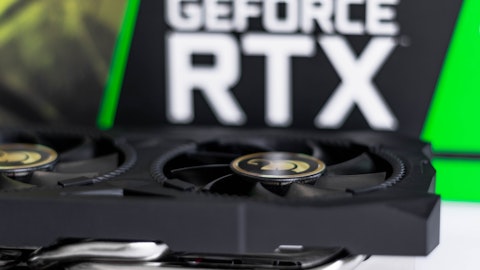Wes Cummins: Yes, Jamestown is paid for. It gets us out a ways. It’s just a matter of how much we spend on construction in Ellendale between now and site level financing. So hopefully, that’s 6 to 8 weeks away because that’s where the vast majority of our funds are going. And if we — if something went a rye and that got delayed or pushed, could we pause there? Yes, we could. But that’s where the vast majority of our CapEx is going at this point.
Kevin Dede: And just apologies for not being the sharpest pool in the shed, Wes, but just to make sure, the — the site level financing is a function of turning that LOI to a contract?
Wes Cummins: Correct.
Kevin Dede: Okay. Thank you for entertaining my questions and apologies for making you go over stuff.
Wes Cummins: Never a problem.
Operator: [Operator Instructions]. Our next question comes from the line from Lucas Pipes with B. Riley.
Lucas Pipes: Wes, I wondered if you could maybe talk a little bit about the case of how the LOI came about. You had a contingent financing agreement up until recently. Did you decide to walk away from that, that agreement expire was the hyperscaler kind of always in the wings was the discussion with the same hyperscaler before you entered into this prior agreement which is additional color.
Wes Cummins: Sure. So Lucas, we’ve constantly had discussions. Once we went into the agreement on the 100 megawatts, we stopped having discussions on that because there was that exclusivity, but we had additional capacity that we’re marketing both at Ellendale and other markets. And so we were in constant discussions with other parties. As I mentioned on the call in January, we were seeing a lot of demand on or additional capacity, we were — we’ve been in discussions with 3 different hyperscalers and then 2 parts that I don’t know if I would classify as that. So that’s — it’s kind of a constant that we continue to market the capacity we have available. And so that’s how, I don’t know if that’s how those discussions came about, but yes, that we’re constantly doing that.
Lucas Pipes: And that is helpful.
Wes Cummins: I don’t — I think I don’t recall if I mentioned this in the call, but we have a pipeline of roughly 1.6 gigawatts that we’re working. And so it’s beyond just the Ellendale site.
Lucas Pipes: Wes, can you expand on that pipeline a bit? Is that all — I’m sorry to harp on this, but again, my view is power is going to be constrained. So that pipeline is that power that you have committed to you?
Wes Cummins: Sure. So we have — I don’t want to give states, Lucas, because we haven’t signed these fully yet, but we’re view in the process of probably over the next few months, but we have a pipeline of sites, a lot of it in the call it the Midwest. So you have a site for 300 megawatts in the Midwest that would come online in ’25, 1 for 500 that would come online in ’25, one that’s in the northern part not in North Dakota, but in that area that we kind of in that area that we work now for 200 that would be available for ’25 and then a few other sites that are — we have obviously the Utah site for 100 that we’ve mentioned publicly before. So that’s just a few.
Lucas Pipes: I appreciate that. And I’d assume the power would be kind of similar cost structure as to what you have in Ellendale and Jamestown.
David Rench: Yes. It’s an attractive price for the HPC application for sure.
Lucas Pipes: Very helpful. Then a follow-up on the recourse thinking of $8 million [indiscernible] or so is the primary potential source of recourse going back to the supplier? Or is there business interruption insurance and potentially other sources?
Wes Cummins: It’s every source available for us. But yes, there’s obviously should be warranty obligations here and other sources of recourse for us.
Lucas Pipes: All right. I’ll leave it here.
Operator: There are no further questions in the queue. I’d like to hand it back to Wes Cummins for closing remarks.
Wes Cummins: Thanks, everyone, for joining. Looking forward to catching up on our next quarterly call. I want to thank all of our employees for their hard work and our shareholders for their patience with us and looking forward to speaking to you soon.
Operator: Ladies and gentlemen, this does conclude today’s teleconference. Thank you for your participation. You may disconnect your lines at this time, and have a wonderful day.
Follow Applied Digital Corp. (NASDAQ:APLD)
Follow Applied Digital Corp. (NASDAQ:APLD)
Receive real-time insider trading and news alerts





